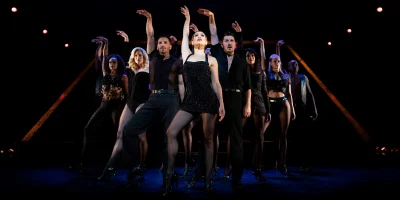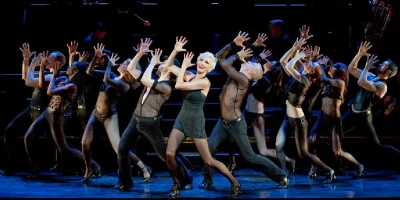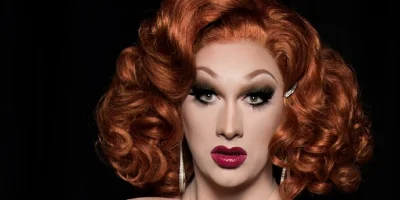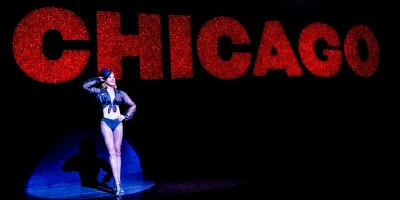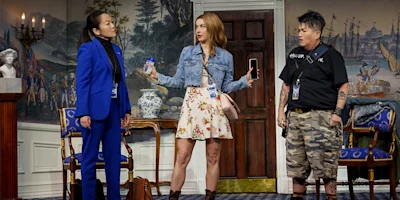
The history behind the musical ‘Chicago’: How 1920s crime and vaudeville inspired the show
The show's characters and crimes are based on real court cases from the 20th century.
I saw the film version of Chicago for the first time this year. While I’d tried to watch it with my family as a kid, my parents, both lawyers, turned it off, explaining that the movie did a horrible job at depicting how the law actually worked.
I always assumed my parents were right: I’ve spent countless days watching them in the courtroom, and it was nothing like Billy Flynn distracting the jury in “Razzle Dazzle.” However (and this will probably be the only time this happens), my lawyer parents were wrong. Chicago is incredibly realistic. If anything, it’s as dramatic as 1920s Chicago legal history, which inspired the show.
The record-breaking, second-longest-running show in Broadway history, Chicago tells the story of Roxie Hart and Velma Kelly, both accused of murdering their husbands, as they prepare for and eventually go to trial. They’re inspired by the hundreds of women who committed similar crimes in 1920s Chicago, and instead of becoming pariahs, they became celebrities. In the musical, Roxie and Velma compete for the attention of smooth-talking lawyer Billy Flynn, who gets their stories on every city newspaper’s front page.
John Kander, Fred Ebb, and Bob Fosse modeled the musical after a vaudeville revue, a popular performance type in the ’20s, to emphasize the sensationalized nature of criminal trials back then. What parts of Chicago are accurate and what’s just all that jazz? Read on to find out.
Get Chicago tickets now.

How the Chicago musical represents life in 1920s Chicago
Picture this: It’s 1923, and there have been three Presidents in three years. The 18th Amendment (Prohibition) is in effect, so you can’t even drink (legally) as you complain about the revolving door of leaders. Everything is changing around you after the end of World War I, as industrialization, urbanization, immigration, and evolving gender roles, resulting from the ratification of the 19th Amendment (white women earning the right to vote), pave the way for the pinnacle of the Jazz Age.
Chicago is set in this landscape, which clearly influences the musical. Velma embodies changing gender roles; she’s a classic flapper figure — complete with short hair and a sharp attitude — who headlines a vaudeville act with her sister (er, headlined) and calls the shots. Plus, amid all that sociopolitical turmoil, it’s no wonder that people wanted something to distract and entertain them. Chicago residents didn’t have true crime podcasts or TikTok investigations back then, but they had newspapers and a willingness to devour juicy stories of sordid crimes.

True crimes that inspired Chicago
The Chicago musical was inspired by Maurine Dallas Watkins’s 1926 play, which, in turn, was inspired by two real-life trials: those of Beulah Annan and Belva Gaetner. The women inspired Roxie and Velma, respectively: Beulah was a housewife cheating on her mechanic husband (she shot her lover, like Roxie), and Belva was a cabaret singer. Belva killed her lover, too; this was changed for the musical, as Velma kills her husband and sister. But Belva, like Velma, did claim she blacked out and doesn’t remember what happened.
Watkins, a Chicago Tribune reporter, covered the women’s trials, joining other newspapers in characterizing them as attractive “jazz babies” corrupted by liquor and men. Though she was as sensational a reporter as anyone, she took a satirical approach to the Chicago play, making fun of the legal system as an entertainment form. (This is probably because Watkins believed Beulah and Belva were guilty, even though they were acquitted.)
Beulah and Belva were part of a long string of women accused of murdering their spouses. The trend began in 1919, when a woman named Emma Simpson was accused of shooting and killing her husband. Between 1921 and 1930, 186 women were accused of the same crime within Cook County alone. Imagine if “Cell Block Tango” had included all of them — the song itself could be its own musical!

Vaudeville performance of the 1920s
Chicago isn’t just a legal history musical. The show also embraces 1920s culture, most specifically the rise of jazz music, evolving gender roles, and especially vaudeville revues. These shows could include dancers, singers, acrobats, magicians, animals, and a host of other entertainment types.
Vaudeville revues were popular before the 1920s, with the dance style’s peak in the mid-1910s. However, women were not widely embraced in the art until the 1920s, when newspapers throughout America began advertising for all-female vaudeville groups, similar to Velma and her sister’s revue or The Six Merry Murderesses.
With a jazzy score composed by John Kander, Chicago uses 1920s culture to not only teach the audience this piece of 1920s history, but also to make fun of how court cases were dramatized. An emcee introduces each musical number and some scenes in Chicago, as though it was a variety show act. These “performances” include a press conference, Roxie’s trial, and even a hanging. (We won’t spoil whose.) Gymnastics, puppetry, singing, and dancing all come into play as these events play out, like acts in a vaudeville revue.

How accurate is Chicago to 1920s history?
It was incredibly rare to be convicted for matricide in 1920s Chicago: Of the 186 accused women, only 24 were convicted, and some of those cases were overturned. Only 12 women served their full time and were convicted. Instead, many of these women were lauded as celebrities, with the two most popular Chicago newspapers, the Chicago Tribune and Hearst Papers, publishing columns dedicated to the trials.
Accused women were thus encouraged to fear little from their trials, besides a possible lack of fame if someone else dominates the headlines at the same time. The American legal system is based on precedent, after all: Previous judgments on cases will be used to determine new judgments. So once a handful of these women walked free, that became the norm.
The true story behind Chicago may seem unbelievable, but similarities remain. Look at modern-day celebrity trials of people like O.J. Simpson and Amanda Knox. Our contemporary obsession with true crime isn’t all that different from the 1920s public’s obsession with the murder trials of hundreds of women, and that’s why Chicago is still such a popular show.
It’s a satire of celebrity culture that still exists 100 years later. But even — or maybe especially — if you’re one of the true crime obsessors that Chicago pokes its fun at, Chicago is one of the most entertaining nights you’ll have in a theatre, with plenty of old-fashioned showbiz flair. Bring on the ol’ razzle dazzle!
Get Chicago tickets now.
Photo credit: Chicago on Broadway. (Photos by Jeremy Daniel)
Frequently asked questions
What is Chicago about?
See why this second-longest-running Broadway show has razzle-dazzled so many audiences. A scorching satire of celebrity culture with classic Kander and Ebb tunes, Chicago shows how two ladies use showbiz pizzazz to get away with murder. Get tickets to witness the criminally fun revival that won six Tony Awards.
Where is Chicago playing?
Chicago is playing at Ambassador Theatre. The theatre is located at 219 West 49th Street, New York, 10019.
How long is Chicago?
The running time of Chicago is 2hr 30min. Incl. 15min intermission.
What's the age requirement for Chicago?
The recommended age for Chicago is Ages 13+. Children under 4 are not permitted..
How do you book tickets for Chicago?
Book tickets for Chicago on New York Theatre Guide.
Who wrote the Chicago musical?
The music for Chicago is written by composer John Kander and lyricist Fred Ebb. Ebb also co-wrote the show's script with Bob Fosse. They adapted the musical from a 1926 play by Maurine Dallas Watkins, also titled Chicago.
What songs are in Chicago on Broadway?
The songs for Chicago, written by John Kander and Fred Ebb, include "Cell Block Tango," "All That Jazz," "Razzle Dazzle," "Roxie," and "We Both Reached for the Gun." Learn about all the songs in Chicago on Broadway.
Is Chicago on Broadway appropriate for kids?
Chicago is not recommended for young children; the age recommendation is 13 and up due to its themes of murder, sex, crime, and adultery. Please note that children 4 and younger are not permitted in Broadway theatres.
When did Chicago open on Broadway?
The current production of Chicago opened in 1996. It was the musical's first revival following its 1996 premiere. Chicago is now the second-longest-running show and longest-running revival in Broadway history.
Who directed Chicago on Broadway?
Walter Bobbie directs the current production of the Chicago musical. He has worked on Broadway as a writer, director, and performer since 1971, and he's also known for staging musicals like Sweet Charity, Footloose, and Bright Star.
Is Chicago on Broadway good?
New York Theatre Guide's 20th-anniversary review of Chicago calls the show "a living, breathing piece of musical theatre history, which rightfully remains at the Ambassador Theatre and reminds us that all you need is class and, of course, all that jazz," rating it five stars. Chicago is now more than 25 years old, proving the lasting appeal of its story, songs, and talent.
Originally published on



